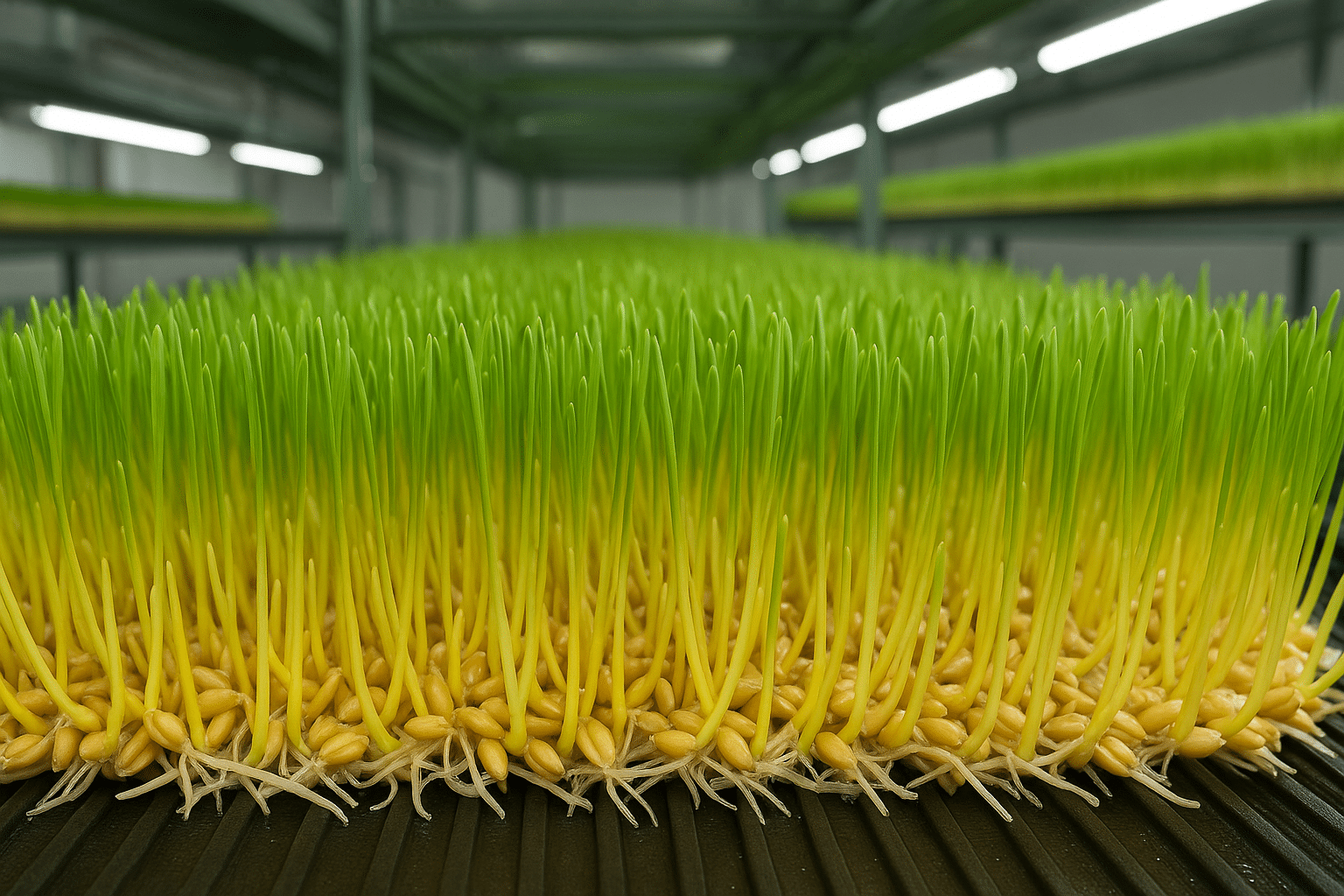Key Takeaways:
- Hydroponic fodder offers water efficiency, faster growth cycles, and improved digestibility but is best used as a feed supplement.
- High seed costs and energy requirements remain key barriers to economic feasibility, especially in areas with abundant land.
- Companies like Future Vertical Grow in Mexico are demonstrating scalable models with added sustainability and inclusivity benefits.
- Indoor fodder systems are especially promising in drought-prone or land-scarce regions and for premium livestock products.
- Technological innovation and operational automation are improving the viability of vertical fodder farming.
Controlled Environment Agriculture Meets Livestock Nutrition
In the face of ongoing droughts and pasture loss across the U.S. and Europe, controlled environment agriculture (CEA) is gaining traction as a potential solution to livestock feed challenges. The July edition of The Indoor Grower explores whether growing fodder in vertical farms is feasible—both technically and economically—in 2025.
“Severe weather events have wiped out natural pastures in the US and Europe, forcing farmers to dip into winter reserves or pay double for hay,” CNN Business recently reported. In Texas alone, cattle herds have decreased by up to 50% due to extreme drought.
Hydroponic Fodder: A Resource-Efficient Supplement
Hydroponic fodder—typically sprouted barley, wheat, or oats—is grown without soil using nutrient-rich water solutions. The crops mature within 6–7 days, offering a fast turnaround and a consistent supply. Studies suggest this method boosts digestibility, milk yield, and overall animal productivity when used as a supplement.
“In ruminants, improvements in digestibility and intake of nutrients result in increased milk yields and milk fat,” noted a 2023 study by Pastorelli et al.
Technical Requirements and Challenges For Hydroponic Fodder
The report highlights that while hydroponic systems use significantly less land and water, they involve notable capital and operational costs, especially for lighting, HVAC systems, and seeds. Energy dependency and dry matter loss during sprouting are additional constraints.
“Hydroponic fodder should be viewed as a feed supplement,” said Dr. Peter Wootton-Beard from Aberystwyth University. “Benefits… are only likely to be realized if the sprouts are correcting an existing nutrient deficiency or if the cost of providing this supplement by other means is prohibitively expensive.”
Future Vertical Grow: A Case Study from Mexico
Future Vertical Grow, based in Mexico, is tackling these challenges with an efficient, low-plastic vertical fodder system. CEO Rogelio Lopez explained that their system requires minimal energy and labor while reserving land for carbon sequestration in the Yucatán.
“Technically, our vertical fodder system is designed to be very lean,” Lopez said. “Energy consumption is minimal, and the system integrates sensors that simplify climate control and automation.”
Their system is modular, scalable, and managed by as few as two people, making it suitable for both commercial and small-scale farming operations. They also use third-party seed inspection technology to mitigate contamination risks.
Economic Feasibility: Context Matters
Economic viability largely depends on local conditions. In high-cost regions or where arable land is limited, vertical fodder systems offer significant advantages. In contrast, areas with cheap land and water often find conventional feed more cost-effective.
Hydroponic fodder can cost up to 13.4 times more than field-grown barley in the U.S., with seed accounting for up to 90% of production costs. While scale does not significantly reduce costs, shared or cooperative systems may offer economic benefits.
Environmental and Operational Benefits
Vertical fodder production systems offer a consistent feed supply regardless of external weather conditions and reduce reliance on chemicals. Faster growth cycles, combined with reduced emissions and improved resource efficiency, contribute to the system’s environmental appeal.
Studies have indicated up to 9% higher daily weight gain in livestock and up to 48% reduction in methane emissions per kilogram of weight gain when hydroponic fodder is used.
Outlook For Hydroponic Fodder
Vertical fodder farming is advancing steadily but remains best suited for regions facing environmental stress, high land costs, or where consistent, high-quality feed is critical. As energy costs decline and automation increases, feasibility is expected to improve—especially for producers targeting high-value livestock markets.
📩 Read the full edition of The Indoor Grower here:
https://www.indoorverticalfarm.com/p/fodder-production-in-cea-feasible
Discover companies working in hydroponic fodder in our directory here.



3 Comments